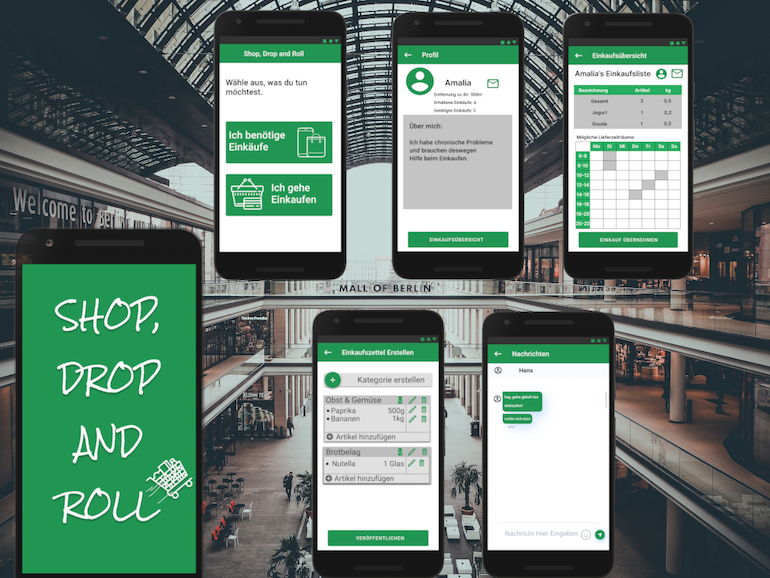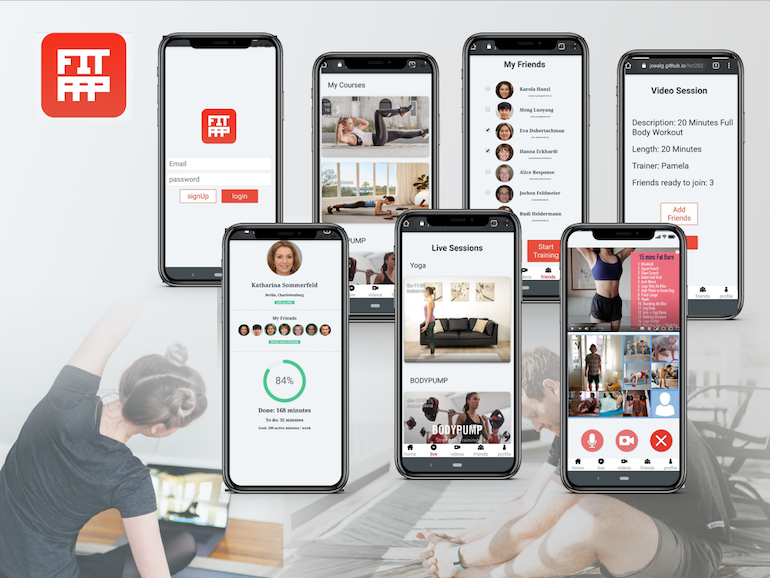Human Computer Interaction (I)
(L: 19330601 E: 19330602)
| Type | Lecture with Exercise |
|---|---|
| Instructor | Prof. Dr. Claudia Müller-Birn |
| Homepage | |
| Number of Places | 20 |
| Start | Apr 23, 2020 | 10:00 AM |
| end | Jul 17, 2020 | 04:00 PM |
| Time | Lecture: Thursday 10 AM - 12 PM Exercise: Tuesday 4 PM - 6 PM |

Course Description
Nowadays, in our digital society, the question is no longer whether software should be used, but which software should be chosen, and how we, as computer scientists, should design our software for human users. In such decision-making processes, the usability of the software has a strong influence on its success (independently how success is defined). Excellent usability and positive user experience can only be achieved by knowing and understanding the user's goals, their hidden needs, and also their cognitive abilities. Thus, besides choosing the "right" technology, considering the users and their needs is fundamental for the later success of the service or product. However, usability is neither a characteristic inherent in software nor can usability, as a software feature, be developed separately at a certain point in time. Usability always stands in a particular usage context, and this context must be clearly understood. Thus, we need to ensure the usability of software for the respective target group despite probably existing complex software functionality. Thus, for improving a software's usability, the entire software development process must be adapted. Depending on the development phase, and the project situation, we can select and apply different principles and methods. In the course "Human-Computer Interaction I", you learn and apply these principles and methods to create a positive user experience.
Literature
- Shneiderman, Ben, et al. "Designing the user interface: strategies for effective human-computer interaction". Pearson, 2016.
- Dix A, Finlay J, Abowd GD, Beale R "Human-Computer Interaction". Pearson Prentice Hall 2004.
- Sharp, Helen, Yvonne Rogers, and Jenny Preece. "Interaction design: beyond human-computer interaction." 2007.
Outline Lecture
| Date | Topic | Additional Readings | |
| 01 | 23.04.2020 | Course Organisation Introducing Human-Computer Interaction What is Human-Centered Design? |
|
| 02 | 30.04.2020 | Collecting and Analyzing Data |
|
| 03 | 07.05.2020 | Defining Requirements and Design Rationales |
Reading in the textbook:
Additional articles/material:
|
| 04 | 14.05.2020 | From Requirements to a Conceptual Design |
Reading in the textbook:
Additional articles/material:
|
| 05 | 28.05.2020 | Considering Human Capabilities and Behavior |
Reading in the textbook:
Additional Reading:
|
| 06 | 04.06.2020 | Considering the Computer and its input-output devices |
Reading:
Additional Information:
Shown Example:
|
| 07 | 11.06.2020 | Designing the Interaction between Human and Computer |
Reading
Accessibility:
User Interface Guidelines
Additional Ressources HCI Gitlab (Design Principles, Design Guidelines und (Living) Styleguides): |
| 08 | 18.06.2020 |
Introducing Evaluating Techniques Remote Usability Testing |
Reading
|
| 09 | 25.06.2020 | Inspections: Heuristic Evaluation and Walkthroughs |
Reading
Readings: Mahatody, T., Sagar, M., & Kolski, C. (2010). State of the art on the cognitive walkthrough method, its variants and evolutions. Intl. Journal of Human–Computer Interaction, 26(8), 741-785. Additional Resources
|
| 10 | 02.07.2020 | Usability Studies |
Reading
Further Readings
Additional Resources |
| 11 | 09.07.2020 | Advanced Topics in HCI |
Student Project Results
Group 1: Meet by accidentKill your boredom, communicate with one of your contacts, or randomly with strangers made by Hannes Hattenbach, Ingrid Tchilibou, Manar Zaboub, Dzhakhar Akperov
In times of social distancing, we wanted to help with combating issue #0434, which is about creating a randomized social network to help against loneliness and to improve social cohesion and therefore decreasing negative feelings about social isolation. To achieve that, we proposed to create a social network that suits everyone. In our solution the user can use one of the multiple functionalities: (1) Contact random people from their contacts (possibly multiple, so people get to know each other) or (2) Contact total strangers, who share the same interests. To create an App for everyone we needed to make it understandable for older people, have big enough buttons, and have it available on all platforms, namely iOS, Android, and as a web-app. Of course, this is neither completely working nor finished but you can test our current prototype here or have a look at our progress, improve it yourself or get some inspiration from our source code.

Get out and go grocery shopping! made by Stefanie Bosch, Margarita Chikobava, Yussuf Kassem, Christopher Kilian, Robin Wenzel
Shop, Drop and Roll is a mobile app designed to connect people who need groceries with people who need help getting groceries. People who need help getting groceries can use the app to create and manage their shopping lists, and maintain contact with the people who would help them. The people who want to help others can see the grocery lists of people in their area with some information, accept these lists and also maintain contact with them.

Sports Challenges and Body Health from home during COVID-19 made by Viktoria Andres, Oleksandra Baga, Zurab Chkhitunidze, Fabrizio Kuruc
Many people underestimate the fact that the majority of people move less when locked down or in quarantine. This is reinforced by the closure of sports clubs and gyms. On the other hand, the availability and high consumption of food will lead to increasing overweight in the population and associated diseases, such as cardiovascular diseases. Many online fitness offers are chargeable or do not motivate people enough to participate regularly. We want to combine personal training depending on the interest (for example videos for parents for training together with a child) and a group training in the real time with a video with friends and/or other people. Thus our goal is to help people working out and reaching the feeling of the real gym at home.

Distributed music-making app for musicians in times of social distancing by Janis Hahn, Bastian Breibert, Melis Atarim, Tom Wiedenhoff
While looking through the list of available challenges we realized that there were no challenges which addressed an issue that we had been having since quarantine started. So we decided to create our own challenge:
“Musicians can't make music together by meeting up anymore.”
At the time, a lot of people felt very isolated. Video calls can be fun but a person might long for more meaningful interaction. Live jamming is not really possible when even a latency of a few hundred milliseconds can completely throw off the other person. Taking these complications into consideration, our goal was to create a web or desktop application which would combine an audio recording software like Audacity and a video calling software like Zoom. We imagine an interaction with our software to go like this: a user logs into our platform and decides to organize a jamming session with their friends. The users can talk to each other over video or text chat. They can then record themselves playing, one person at a time. If they want, they can invite others to watch by live streaming their session.

Test your knowledge of current rules of conduct by Leonie Ebert, Jannis Hamann, Ira Kokoshko, Florian Mercks
People want to keep abreast of frequently changing rules and regulations during the COVID-19 pandemic. CoroQuiz would inform users about current guidelines in a quiz form. In this way users wouldn’t spend a lot of time and effort getting updates from different sources. The form of the quiz can also help people achieve a better understanding of the regulations and the content of the quiz, with up-to-date rules of conduct and hygiene, can help to slow the spread of the virus.

